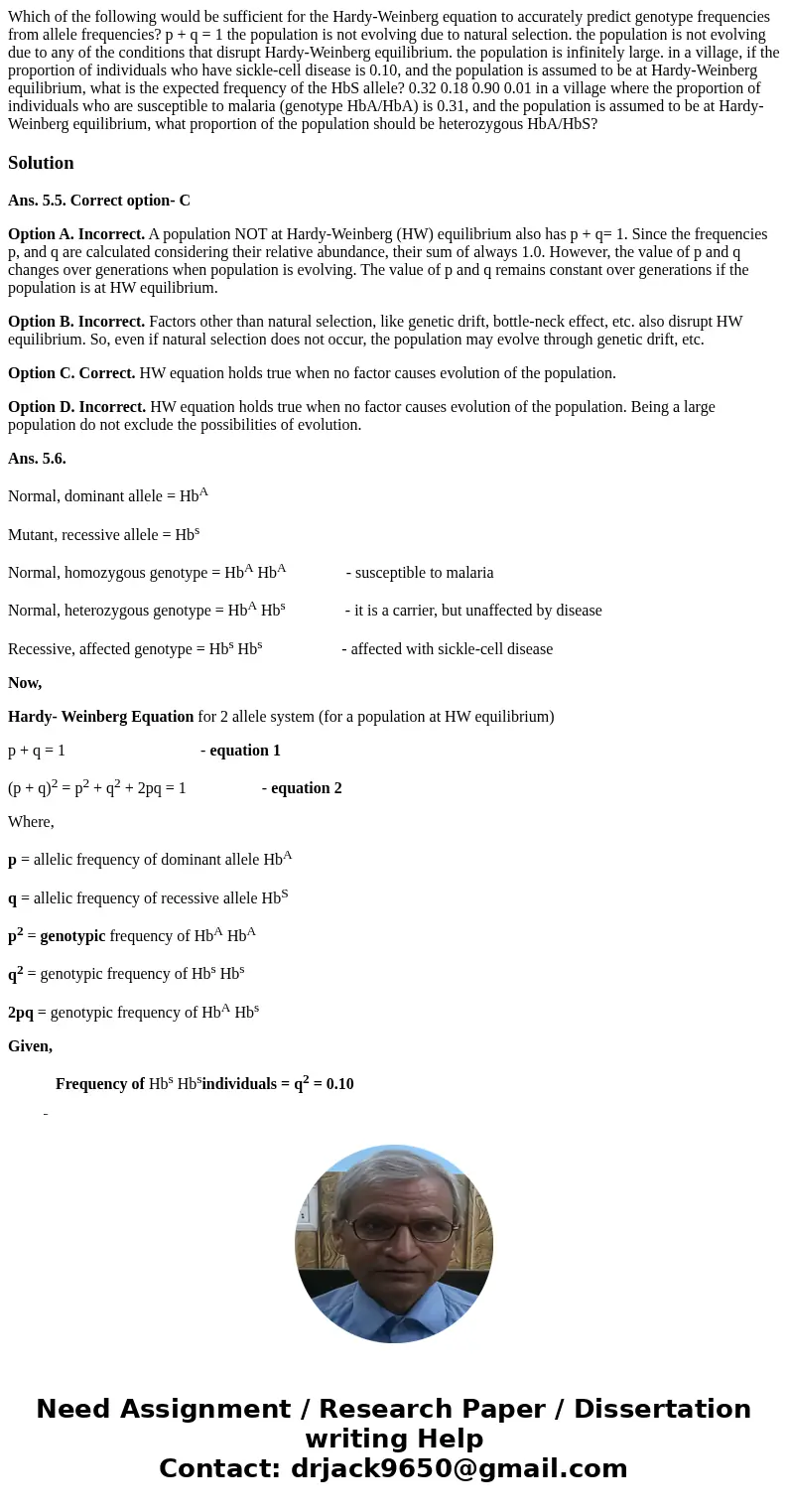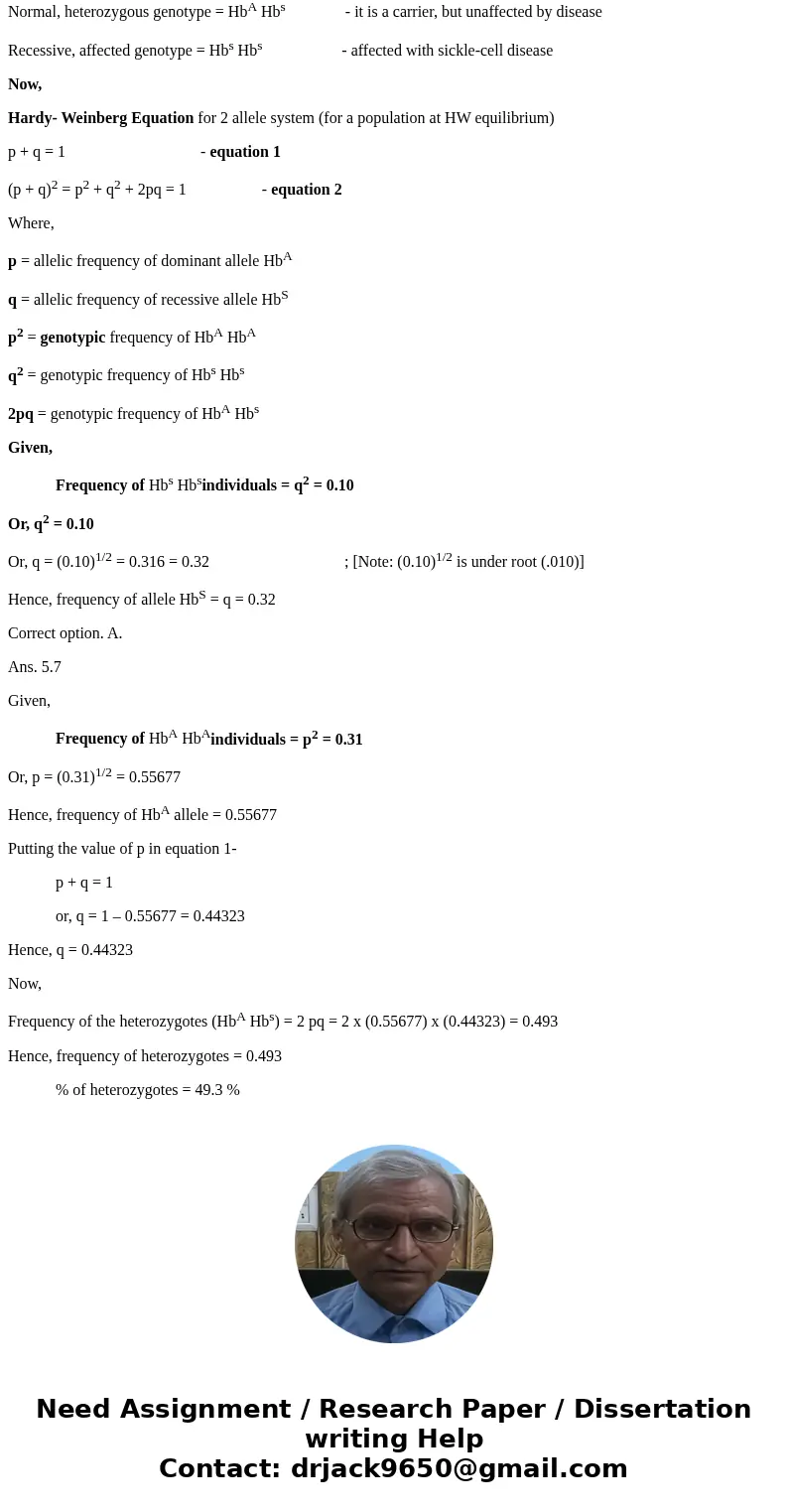Which of the following would be sufficient for the HardyWein
Solution
Ans. 5.5. Correct option- C
Option A. Incorrect. A population NOT at Hardy-Weinberg (HW) equilibrium also has p + q= 1. Since the frequencies p, and q are calculated considering their relative abundance, their sum of always 1.0. However, the value of p and q changes over generations when population is evolving. The value of p and q remains constant over generations if the population is at HW equilibrium.
Option B. Incorrect. Factors other than natural selection, like genetic drift, bottle-neck effect, etc. also disrupt HW equilibrium. So, even if natural selection does not occur, the population may evolve through genetic drift, etc.
Option C. Correct. HW equation holds true when no factor causes evolution of the population.
Option D. Incorrect. HW equation holds true when no factor causes evolution of the population. Being a large population do not exclude the possibilities of evolution.
Ans. 5.6.
Normal, dominant allele = HbA
Mutant, recessive allele = Hbs
Normal, homozygous genotype = HbA HbA - susceptible to malaria
Normal, heterozygous genotype = HbA Hbs - it is a carrier, but unaffected by disease
Recessive, affected genotype = Hbs Hbs - affected with sickle-cell disease
Now,
Hardy- Weinberg Equation for 2 allele system (for a population at HW equilibrium)
p + q = 1 - equation 1
(p + q)2 = p2 + q2 + 2pq = 1 - equation 2
Where,
p = allelic frequency of dominant allele HbA
q = allelic frequency of recessive allele HbS
p2 = genotypic frequency of HbA HbA
q2 = genotypic frequency of Hbs Hbs
2pq = genotypic frequency of HbA Hbs
Given,
Frequency of Hbs Hbsindividuals = q2 = 0.10
Or, q2 = 0.10
Or, q = (0.10)1/2 = 0.316 = 0.32 ; [Note: (0.10)1/2 is under root (.010)]
Hence, frequency of allele HbS = q = 0.32
Correct option. A.
Ans. 5.7
Given,
Frequency of HbA HbAindividuals = p2 = 0.31
Or, p = (0.31)1/2 = 0.55677
Hence, frequency of HbA allele = 0.55677
Putting the value of p in equation 1-
p + q = 1
or, q = 1 – 0.55677 = 0.44323
Hence, q = 0.44323
Now,
Frequency of the heterozygotes (HbA Hbs) = 2 pq = 2 x (0.55677) x (0.44323) = 0.493
Hence, frequency of heterozygotes = 0.493
% of heterozygotes = 49.3 %


 Homework Sourse
Homework Sourse